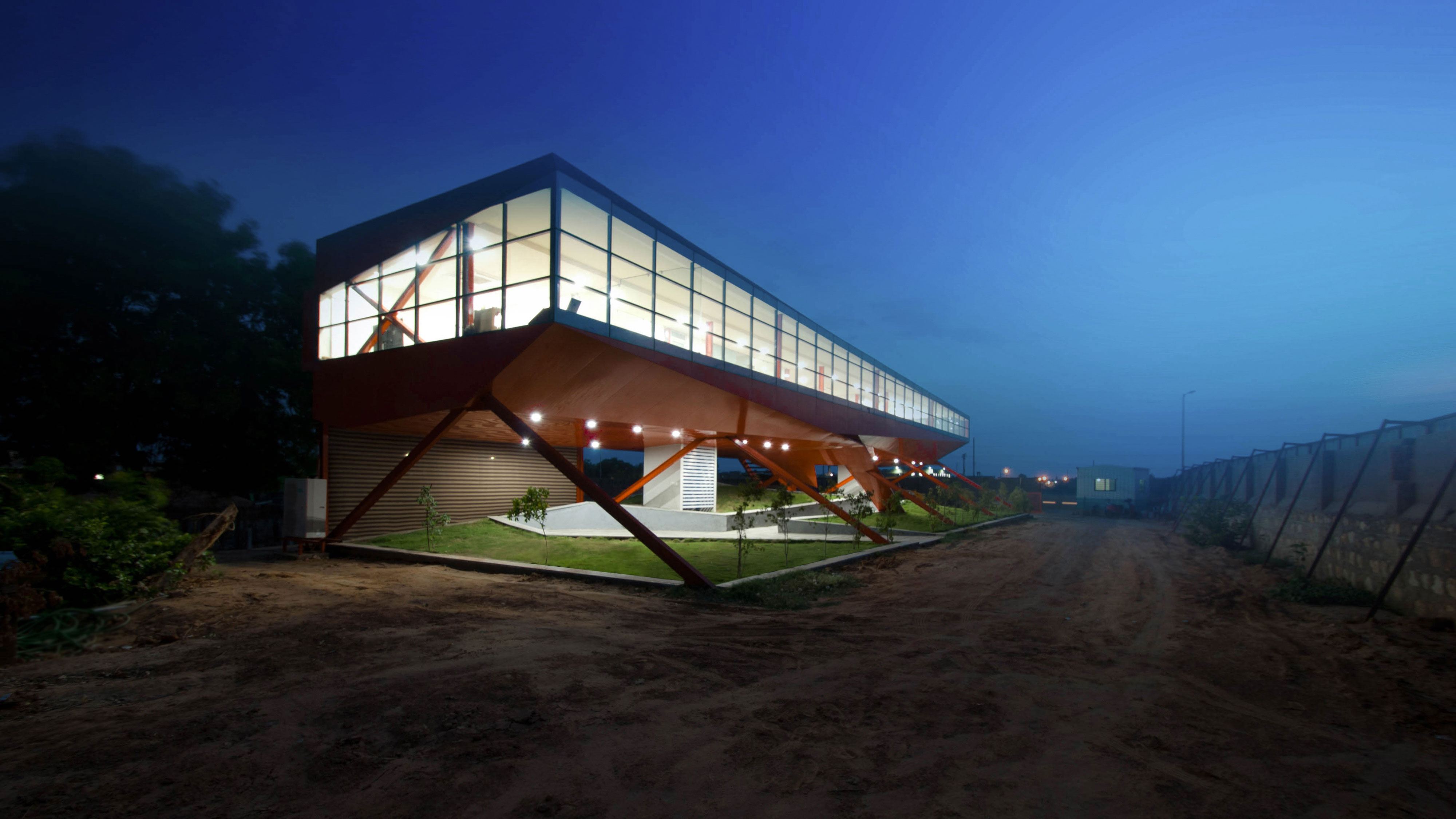Alexander Valley, California
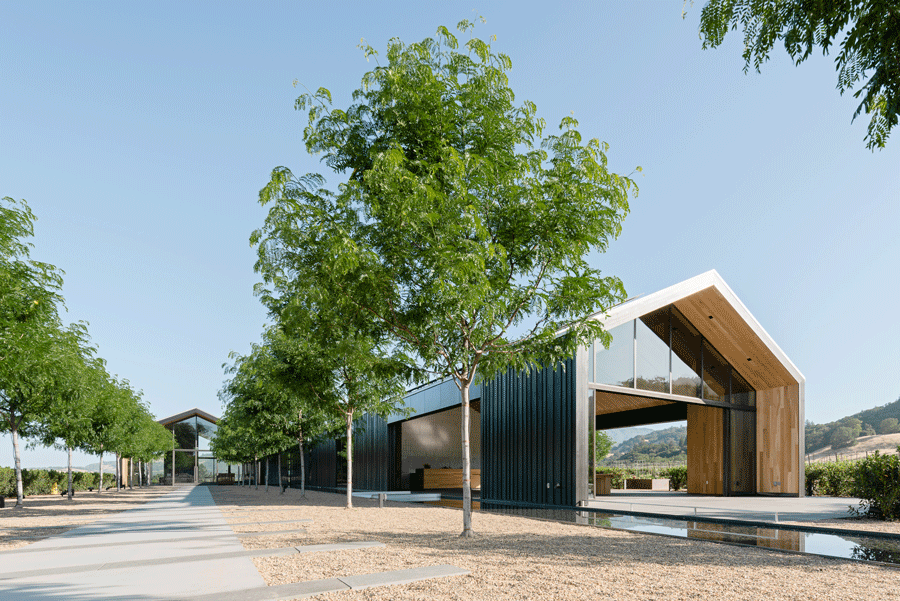
The following description is courtesy of Piechota Architecture.
Water plays a central role in the region and in the production of wine; San Francisco-based architecture firm Piechota Architecture recognized that and produced a nearly-net-zero-water tasting room and production facility for the small family-owned Silver Oak. Thinking also of the aesthetic role of water, a reflective pool cuts its way through the tasting room; on sunny days, the pool reflects a window, which in turn reflects the pool. The building becomes a study in aesthetic rhythms, syncopations. Walking up the long landscaped walkway, the layers of articulation—gravel, concrete, tree, siding, grass, blade, glass, wood—present in the project begin to unfold.
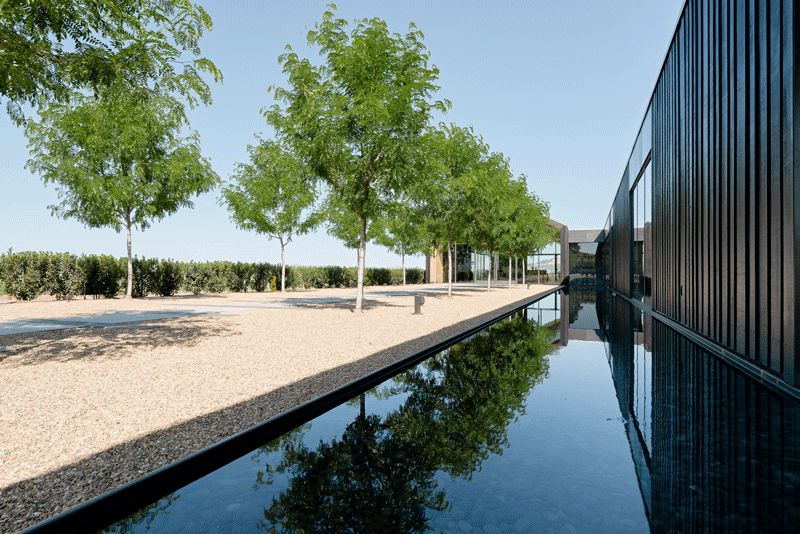
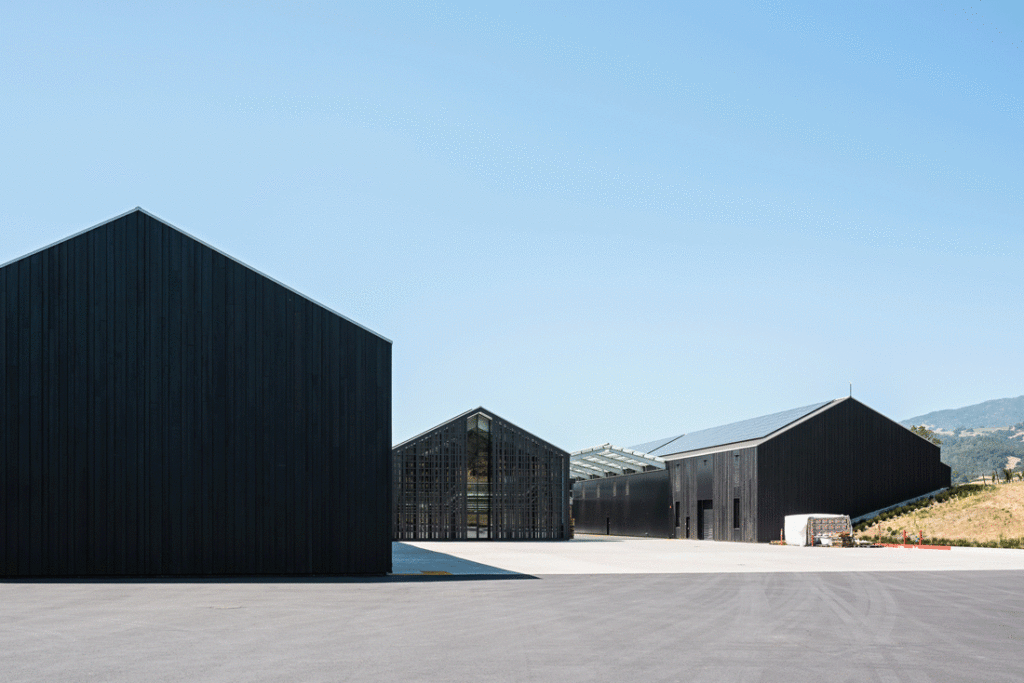
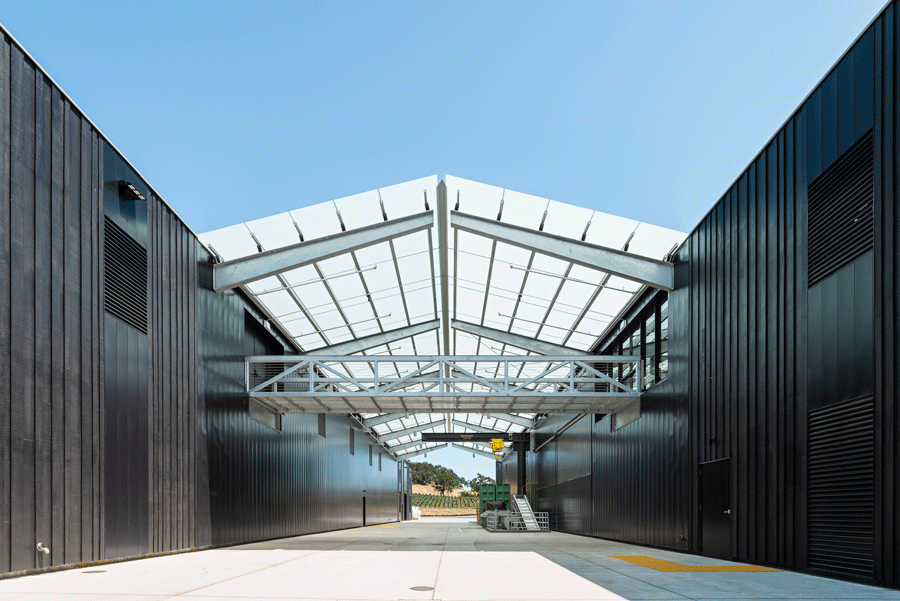
The shape of the exterior references the dominant barn form in the area, here reduced to its simplest clarity. Driving up, the visitor sees the barn-like tasting room and production spaces emerge effortlessly from the hillside. Inside, every space has a view to the vineyard, and the local landscape becomes art. The window mullions in the hallway connect the open tasting room to the clearly defined kitchen, whose openness and relationship to the garden is an explicit expression of the deep relationship between farm and table here. In the event pavilion, massive glass walls slide open, creating the sense of an outdoor patio still sheltered by crisp architecture, opening visitors up to the calming breeze of the valley winds.
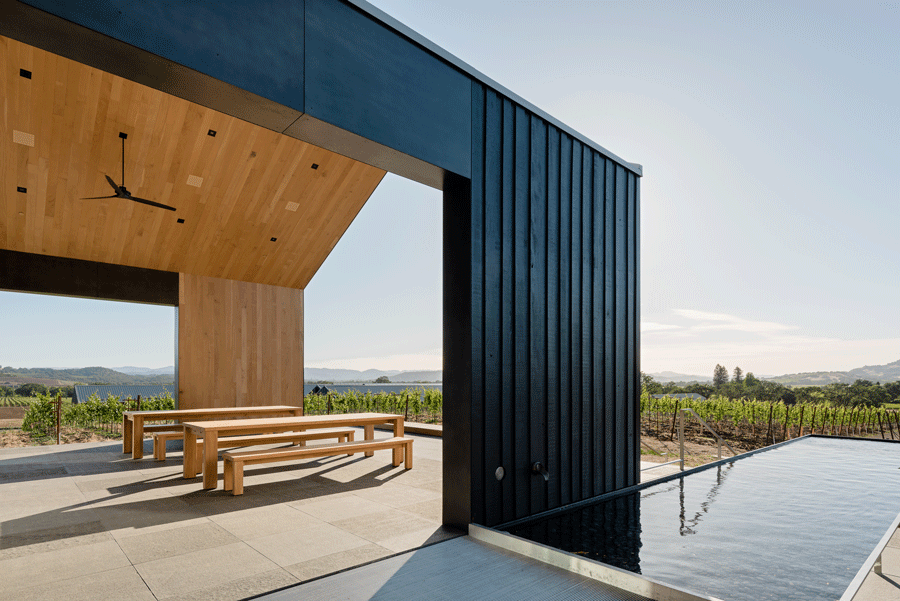
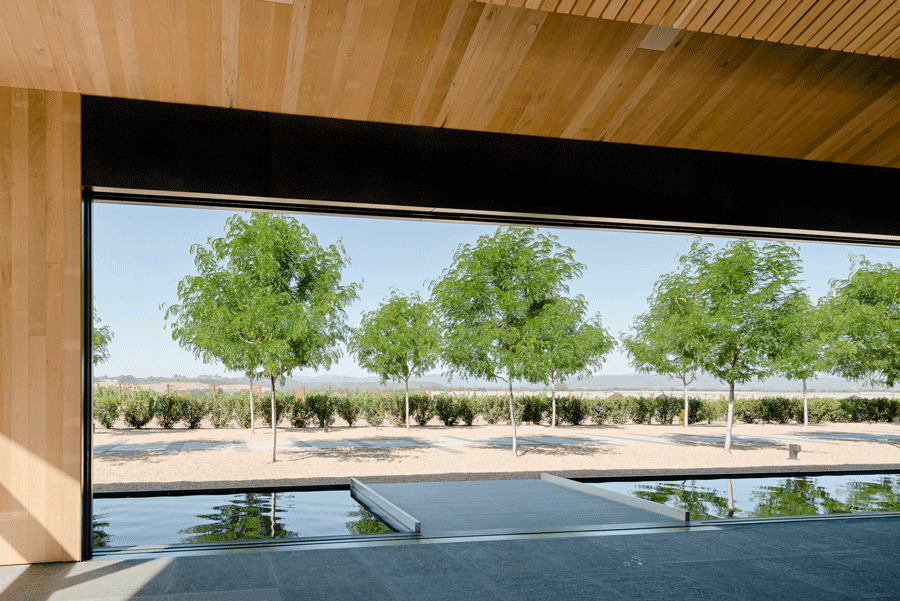
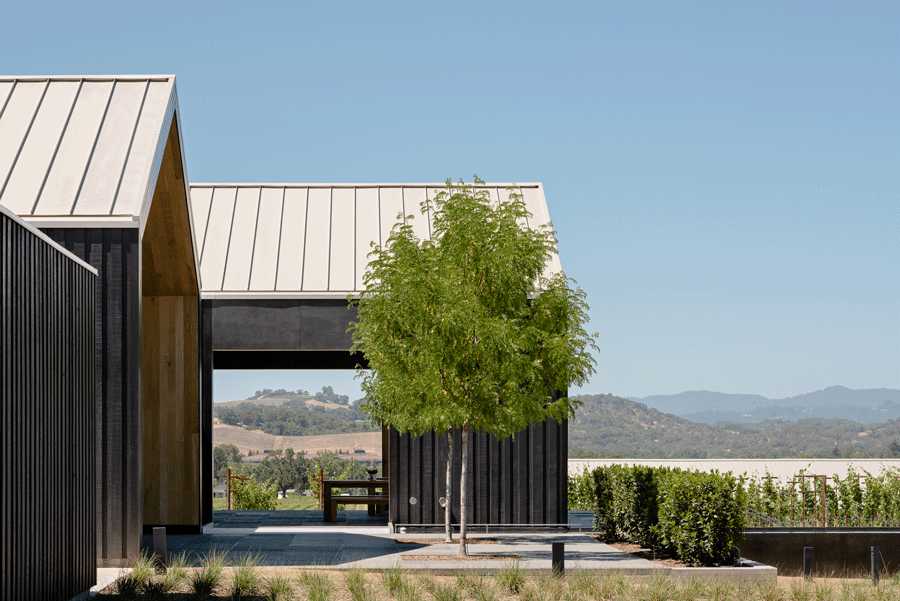
That is the inside; there is also the outside: if you look, the hill behind the main tasting room becomes the central focus. Looking through a sweeping open space whose shape is reflective of the idealized and almost-Platonic barn, you see a gentle rolling landscape, dotted with trees. The Alexander Valley has its own spirit; long the little sibling to the more heavily-built-up Napa to the east, the Valley has been recognized for its small wineries; its more intimate orientation to the production of wine; its status as an almost-secret (that is just now beginning to be told).
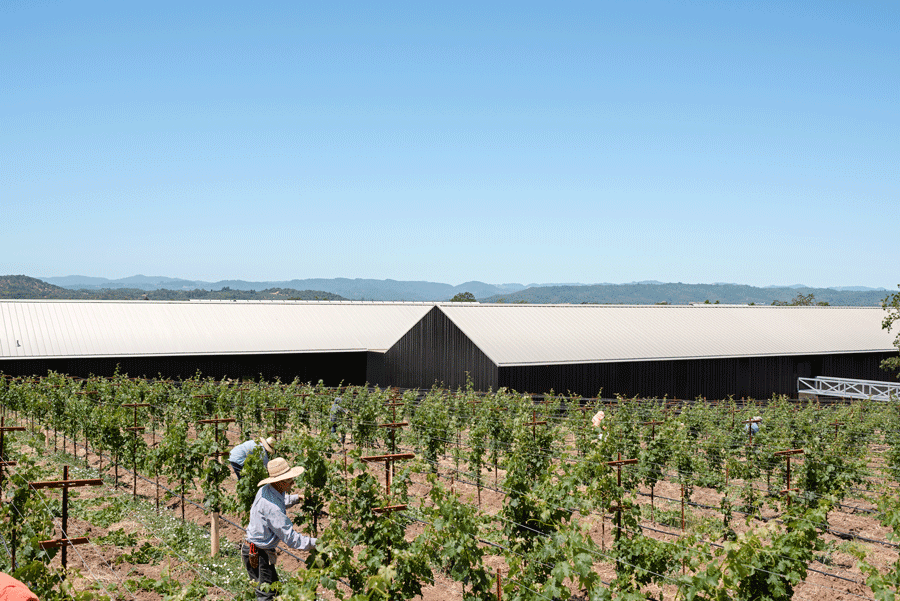
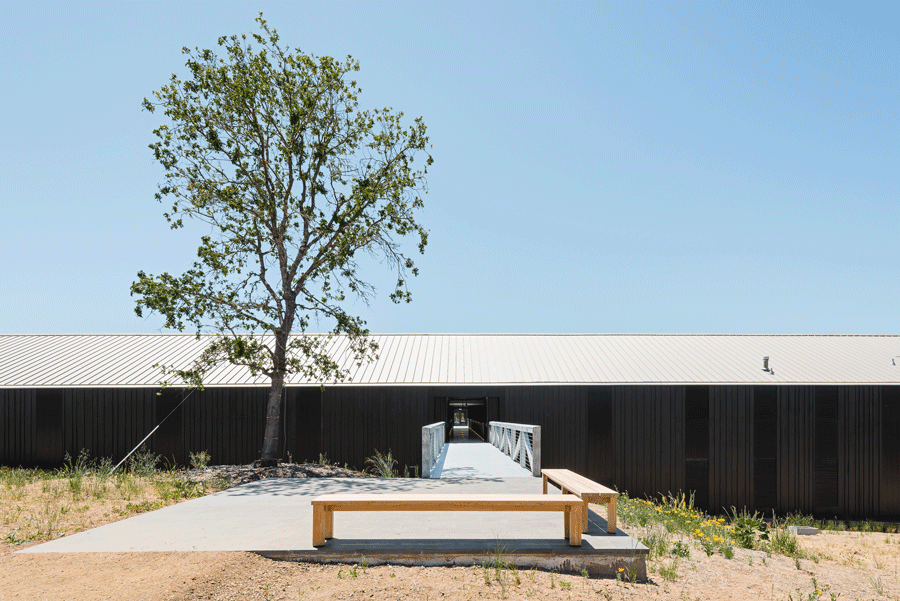
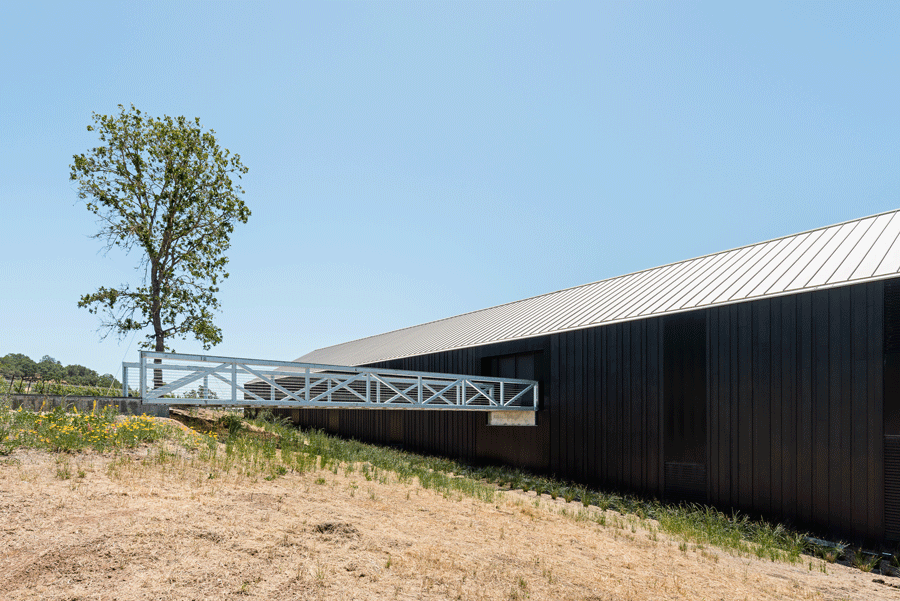
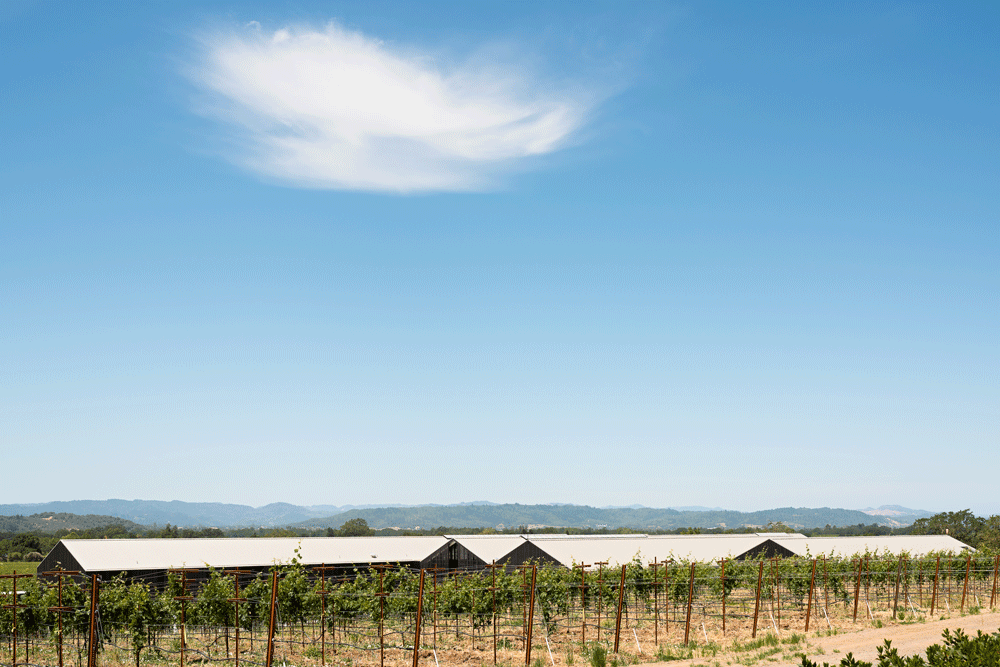
The history of the region also unfolds here. The winery’s exterior is clad in wood siding repurposed from 100-year-old wine tanks from Mondavi, one of the valley’s pioneers of winemaking. Valley oak wood, used throughout, came from Middletown trees that died in the Valley Fire of 2015, their blackened trunks taking on new life in the winery. The entry stair in the production department is built from repurposed wood from oak wine barrels, the red wine stains purposefully left. The material palette, dominantly steel and wood, reference the construction of a wine barrel, while wood slats at the end of the fermentation room shape light and shadow, reminiscent of the quality of light inside old barns – the way in which the sun, no matter how guarded, will still find a way in.
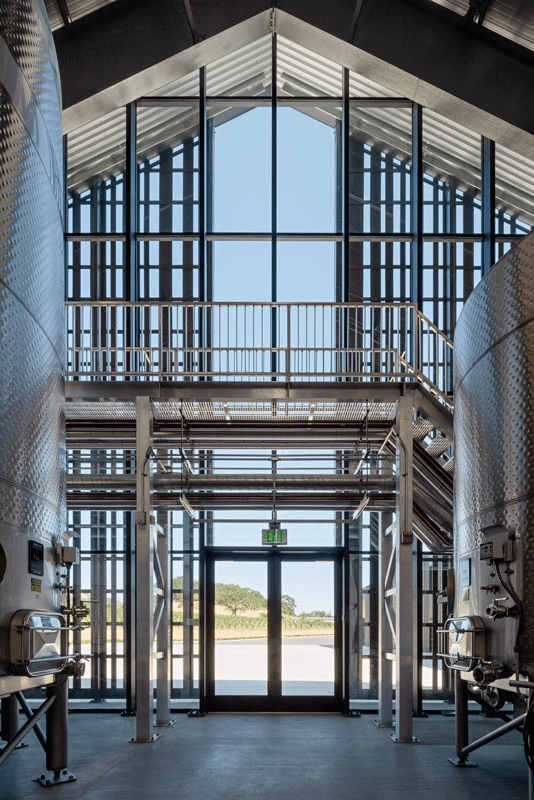
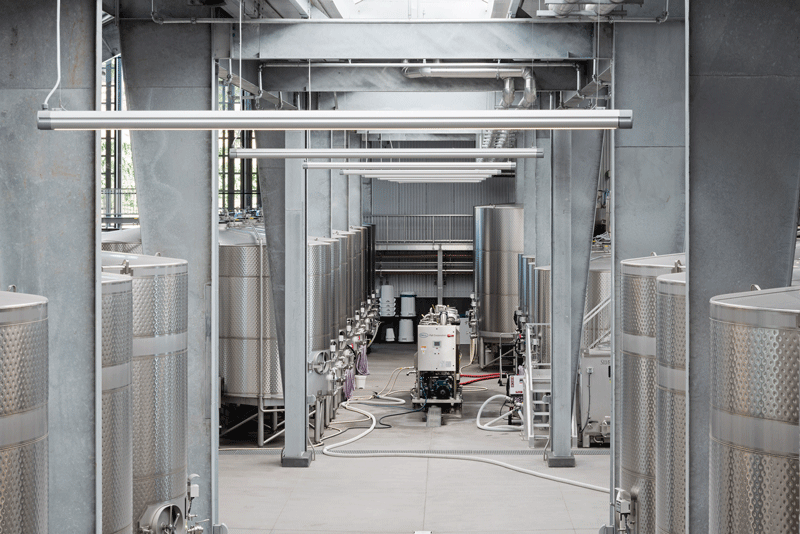
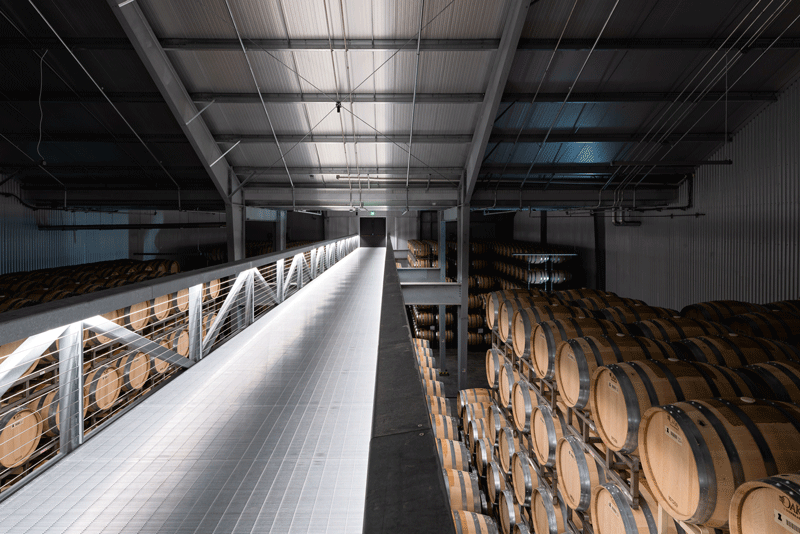
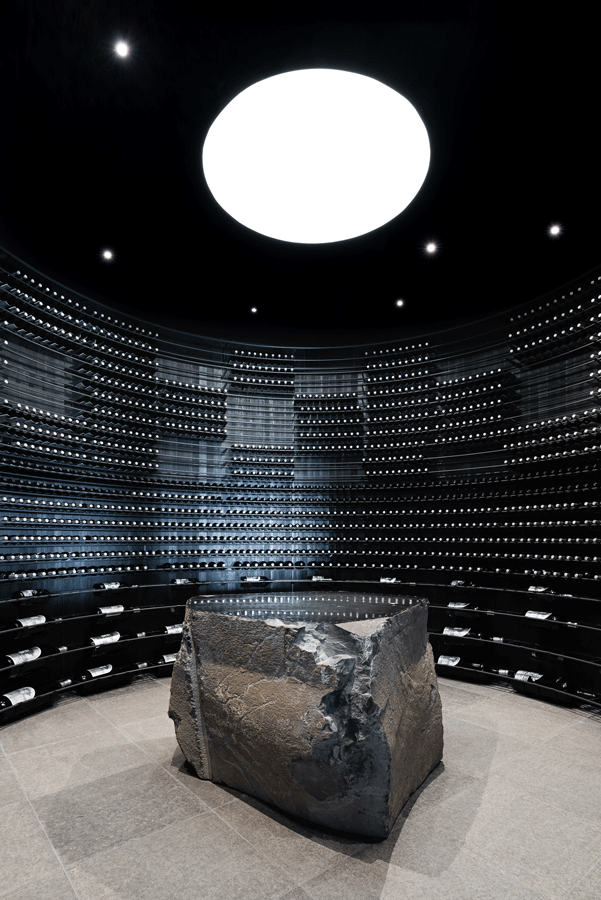
The scent of wine permeates the space, until you step outside when the scent of herbs fills the breeze. Near the pavilion-like entry patio, a series of raised vegetable gardens contrast with the unfurling and untamed landscape beyond the winery’s borders. The smells, colors, movements of the garden connect to a larger cycle – the observation of seasonal changes, and the way in which we, as humans, can find delight in our lives through the knowledge that they are always changing.
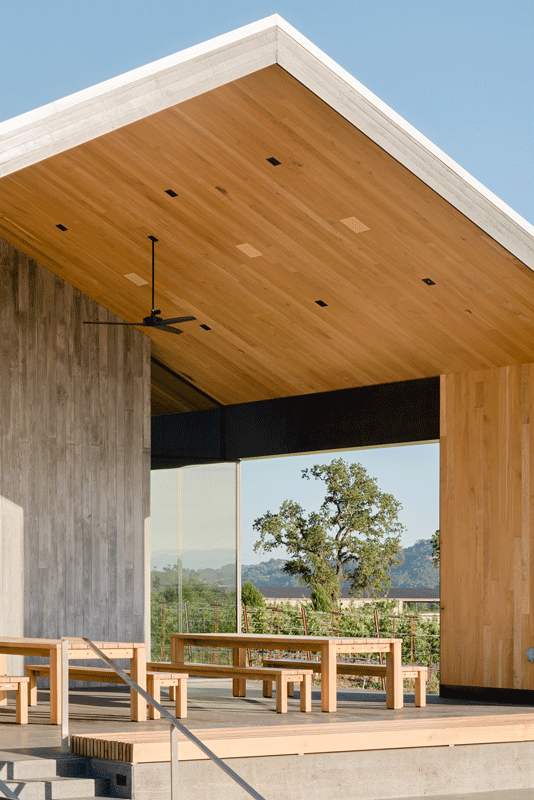
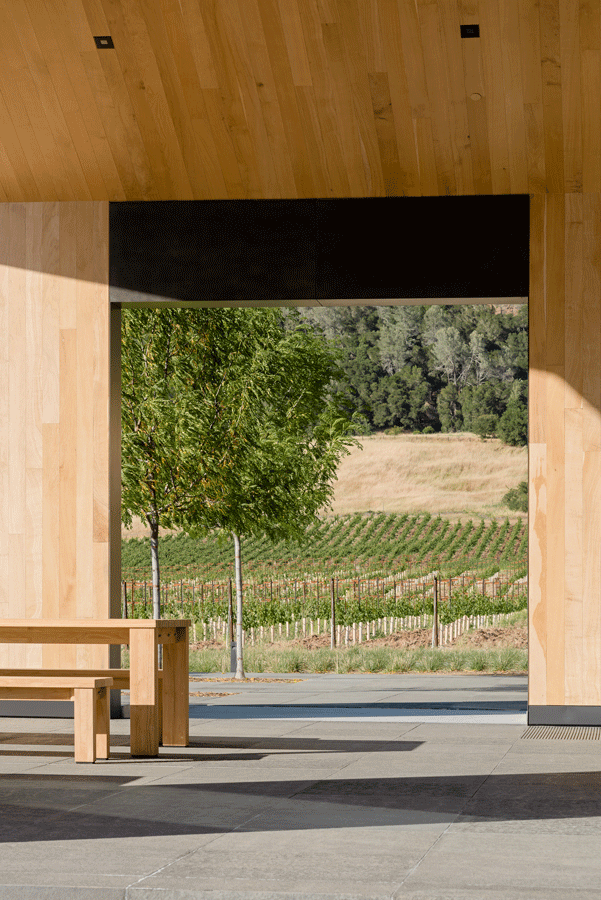
Project Facts
Overview
Silver Oak recently opened its second winery in Alexander Valley and earned LEED-Platinum Certification for Building Design and Construction (BD+C), becoming the most sustainable winery in the world.
Designed by Daniel Piechota to frame the vineyard, the winery features panoramic views of the Alexander Valley bench, surrounding the 113-acre estate and 75 acres of prime Cabernet Sauvignon vineyards.
Key Features
- The property was originally deeded in 1877 to Cyrus Alexander, namesake of the Alexander Valley, who first established the land as one of the finest vineyard sites in Sonoma County. Today, the vineyard is planted with 75 acres of Cabernet Sauvignon and will form the future backbone for Silver Oak’s Alexander Valley Cabernet Sauvignon.
- Silver
Oak applies the concept of “reduce, reuse, recycle” to this winery.
- Net positive energy, net positive water in a production winery: The winery’s goal is to use the least amount of water possible per gallon of wine produced, ultimately aiming to produce more energy and water than consumed.
- Membrane Bioreactor: The new winery features state-of-the-art water reclamation technologies, including a dedicated Membrane Bioreactor (MBR), which treats and filters 100% of the water from the cellar with natural biological activity and reduces potable water needs by 37%.
- Ground Water Preservation and Diversion: Along with the membrane bioreactor, rainwater harvesting will provide 100% of landscape irrigation needs, and a mix of waterless and low water use fixtures decrease dependence on fresh water aquifers.
- Energy Conservation: The winery’s 2,595 rooftop solar panels produce over one megawatt of electricity a year and will ultimately generate 105% of the energy needs on-site.
- Building Materials: More than 3,000 building materials and equipment choices were carefully vetted for harmful and commonly found red-list chemicals. Reclaimed redwood siding on the winery and tasting room was salvaged from old wine tanks built by Cherokee Winery in the 1930s, then later disassembled by Robert Mondavi when he purchased the brand. Valley oak used for flooring, as well as wall and ceiling paneling in offices and the tasting room, is sourced from naturally felled trees removed from their natural habitat in Middletown for safety after the Valley Fire of 2015.
- The new winery in Alexander Valley received its LEED Platinum certification for Building Design and Construction (BD+C). In 2015, the Oakville winery received its LEED Platinum Certification in the category of Existing Building, Operations and Maintenance (O+M), making the two Silver Oak wineries the first production wineries to achieve each of these certifications.

